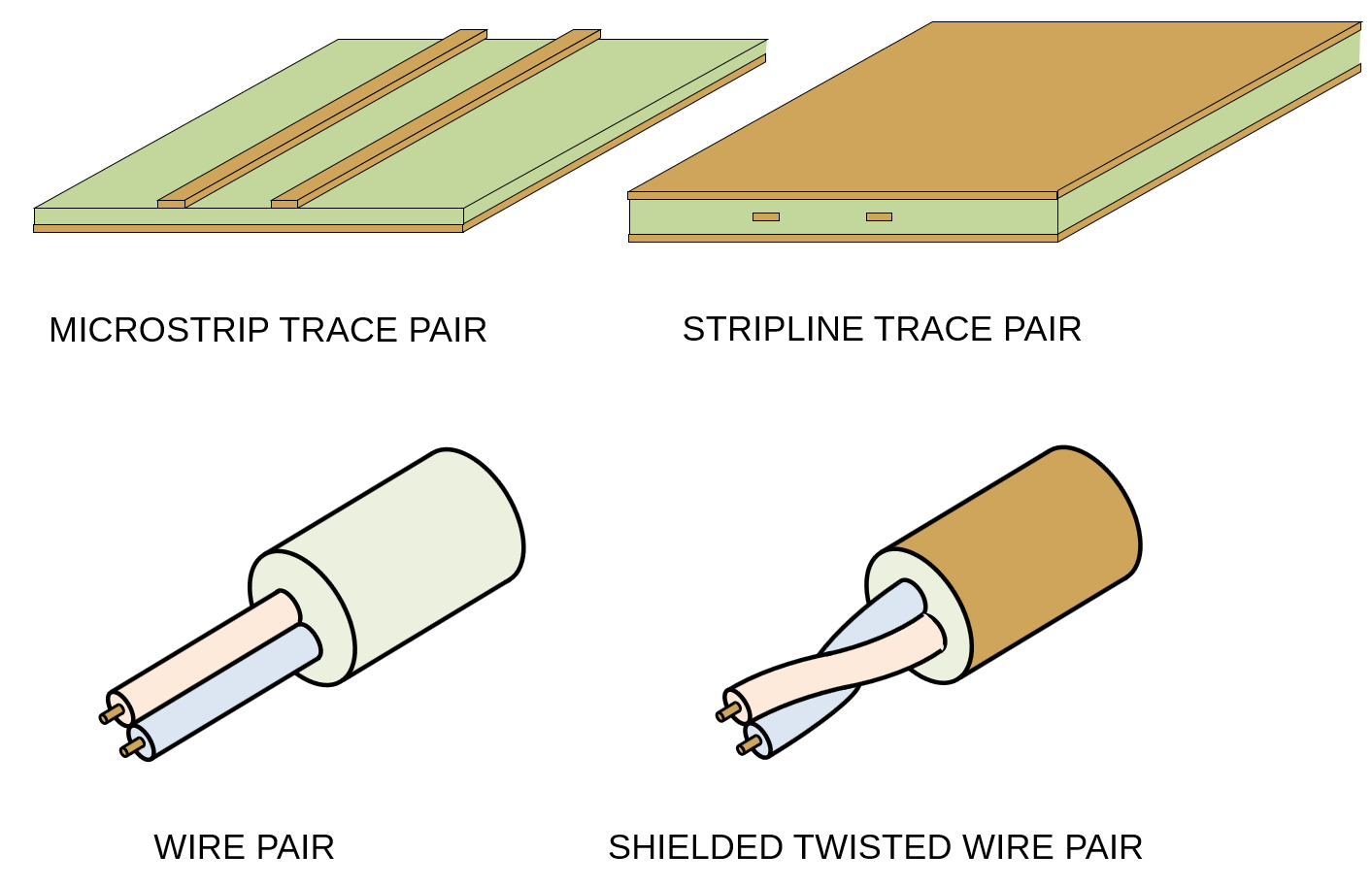EMC Question of the Week: November 9, 2020

Assuming the dielectric materials are the same, which transmission line would have the longest propagation delay?
- microstrip trace pair
- stripline trace pair
- unshielded parallel wires
- shielded twisted wire pair
Answer
The best answer is "d". The velocity of propagation for a TEM wave in a transmission line is determined by the dielectric, and is equal to 1/sqrt(με), where μ and ε are the permeability and permittivity of the dielectric, respectively. In an air dielectric, the first three options would all exhibit the same propagation delay. In dielectrics such as FR-4, with a permittivity greater than that of air, microstrip traces and unshielded wire pairs generally exhibit slightly shorter propagation delays because some of the field is propagating in air rather than the dielectric.
The fields in a twisted wire pair propagate along the conductors at the same velocity as the fields in an untwisted wire pair. However, twisting causes the distance covered by a pair of wires to decrease slightly. To cover a given distance, longer conductors are required resulting in a slight increase in the end-to-end propagation delay. The ratio of the transmission line length to the conductor length is called the twist factor. The propagation delay of a twisted wire pair is equal to the propagation delay for the untwisted wire pair times the twist factor.
The twist factor of ethernet and telephone cables is approximately 1.06 - 1.07 (i.e. an increase in the propagation delay of 6% - 7%). In wire harnesses containing more than one twisted wire pair, the individual pairs are generally assigned different twist factors in order to minimize the average crosstalk between them.
Have a comment or question regarding this solution? We'd like to hear from you. Email us at
